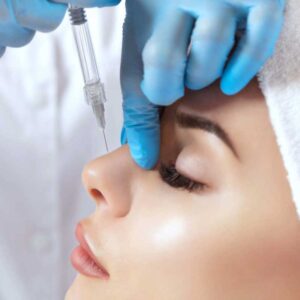CAD/CAM Technology
What is CAD/CAM Technology?
CAD/CAM technology in dentistry refers to Computer-Aided Design (CAD) and Computer-Aided Manufacturing (CAM) systems used to create precise dental restorations and prosthetics. This advanced technology enables the digital design and fabrication of dental crowns, bridges, veneers, and other restorations, improving both the accuracy and efficiency of dental treatments.
How CAD/CAM Technology Works
The process begins with a digital scan of the patient’s mouth using an intraoral scanner. This scan creates a detailed 3D model of the teeth and gums, which is then used to design the dental restoration on a computer. CAD software allows the dentist to customize the design, ensuring that it fits perfectly and matches the patient’s natural teeth.
Once the design is finalized, the information is sent to a CAM system, which manufactures the restoration using various materials such as ceramic or resin. The CAM system uses milling machines or 3D printers to create the restoration with high precision. The finished product is then fitted to the patient’s mouth, often with minimal adjustments.
Benefits of CAD/CAM Technology
CAD/CAM technology offers numerous benefits in dental care. It significantly reduces the time required to produce dental restorations, often allowing same-day treatments. The precision of digital design ensures a better fit and function of the restorations, leading to improved patient outcomes. Additionally, the use of digital impressions eliminates the need for traditional molds, which can be uncomfortable for patients.
Another advantage is the ability to create highly customized restorations that closely match the patient’s natural teeth in terms of color, shape, and size. CAD/CAM technology also enhances the durability and longevity of dental restorations by using advanced materials and manufacturing techniques.
Applications of CAD/CAM Technology
CAD/CAM technology is used for various dental applications. It is commonly employed in the creation of crowns, bridges, veneers, and inlays or onlays. The technology is also utilized in orthodontics for the production of clear aligners and custom braces. Additionally, CAD/CAM systems are used in implantology to design and fabricate custom abutments and prosthetics.
Who Can Benefit from CAD/CAM Technology?
Patients who require dental restorations or prosthetics are ideal candidates for CAD/CAM technology. It is particularly beneficial for those seeking quick and accurate solutions, as well as for those who desire highly customized and aesthetically pleasing results. The technology is also advantageous for patients who need complex restorations or multiple treatments in a single visit.
Caring for CAD/CAM Restorations
Caring for dental restorations made with CAD/CAM technology involves maintaining good oral hygiene practices. Regular brushing, flossing, and routine dental check-ups are essential to ensure the longevity and functionality of the restorations. Avoiding habits that can damage the restorations, such as chewing on hard objects or grinding teeth, is also important.
Conclusion
CAD/CAM technology represents a significant advancement in modern dentistry, offering precise and efficient solutions for creating dental restorations and prosthetics. By leveraging digital design and manufacturing, CAD/CAM technology improves the accuracy, speed, and customization of dental treatments. Consulting with a dentist who utilizes CAD/CAM technology can provide patients with enhanced care and results that contribute to a healthier, more beautiful smile.
Other Brands
Tours
https://wegoturkiye.com/
Luxemedicare Spanish
https://turquiatours.es/
Quick Contacts
- +90 535 681 83 55
- info@luxemedicare.com
- İstanbul
- Turkiye







